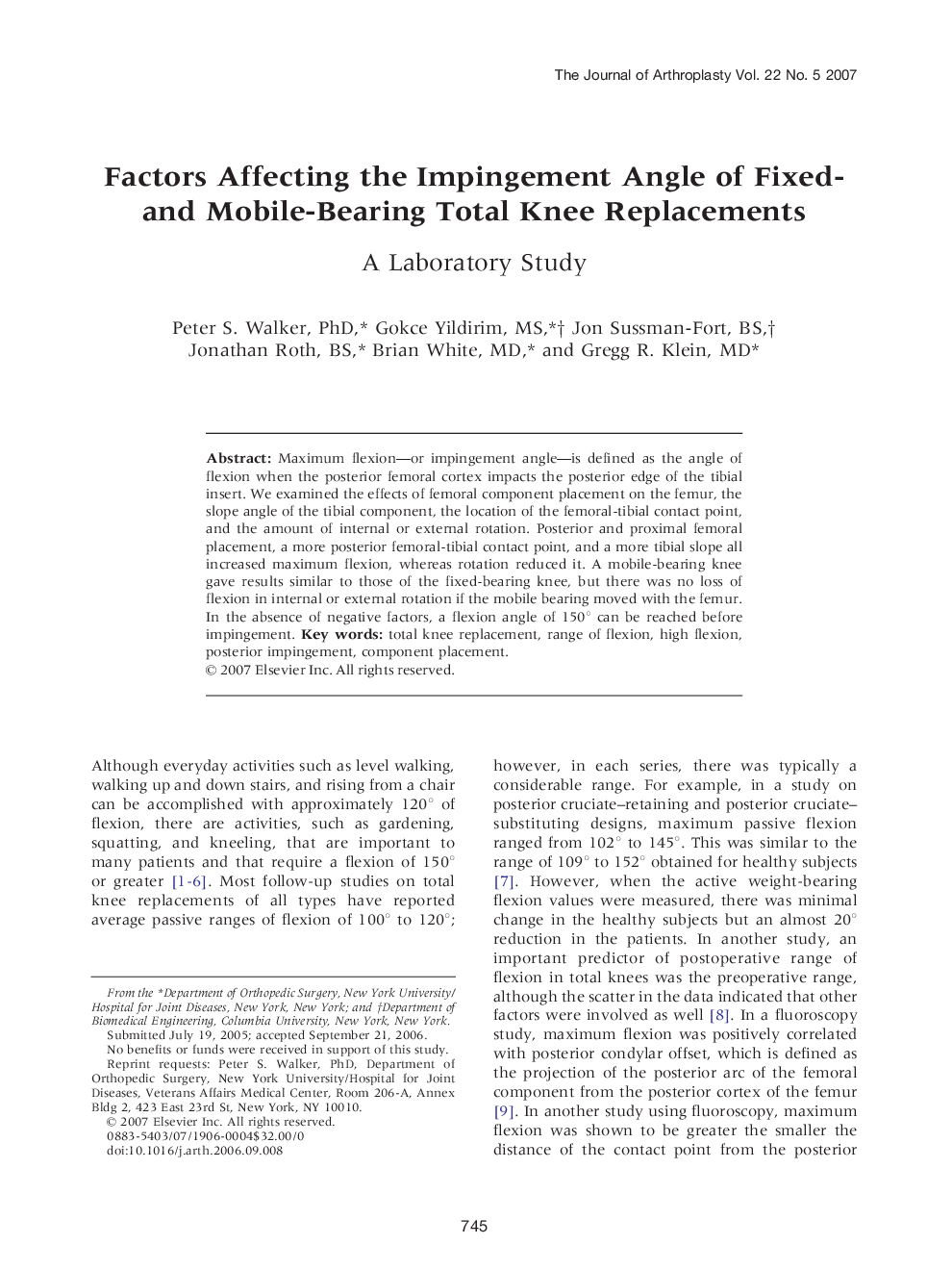| کد مقاله | کد نشریه | سال انتشار | مقاله انگلیسی | نسخه تمام متن |
|---|---|---|---|---|
| 4063594 | 1604074 | 2007 | 8 صفحه PDF | دانلود رایگان |

Maximum flexion—or impingement angle—is defined as the angle of flexion when the posterior femoral cortex impacts the posterior edge of the tibial insert. We examined the effects of femoral component placement on the femur, the slope angle of the tibial component, the location of the femoral-tibial contact point, and the amount of internal or external rotation. Posterior and proximal femoral placement, a more posterior femoral-tibial contact point, and a more tibial slope all increased maximum flexion, whereas rotation reduced it. A mobile-bearing knee gave results similar to those of the fixed-bearing knee, but there was no loss of flexion in internal or external rotation if the mobile bearing moved with the femur. In the absence of negative factors, a flexion angle of 150° can be reached before impingement.
Journal: The Journal of Arthroplasty - Volume 22, Issue 5, August 2007, Pages 745–752